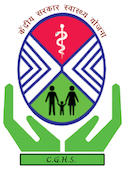In Ayurveda, the functions of PranaVayu are held responsible for the process of respiration in the human body. The Pranavaha Srotas are channels or tracts (Srotas) in which Pranavayu flows. PranaVayu is compared with atmospheric oxygen, which is necessary to carry out the vital functions of life. The organs of the respiratory system include:
- Nose: It lies in the middle of the cranium & mouth, which is the only outer part visible. Posterior it communicates with the pharynx
- Pharynx: Pharynx is a funnel-shaped structure that connects the nasal cavity &mouth to the larynx & oesophagus inferiorly. It is a standard passage for air (through Pharynx & Trachea, the canal for air) & food (through the throat).
- Larynx: Larynx is situated between Pharynx &trachea. It acts as a passage of air to the respiratory system & food to the oesophagus. During swallowing, its inlet is closed by the epiglottis.
- Trachea: It is 10-12 cm long. The trachea is the continuation of the larynx and ends in getting divided into 2 principle bronchi in the mid thorax.
- The bronchi: The trachea is divided into 2 parts–viz. Left & right bronchi at about at the level of 5th vertebra of the thorax in the mediastinum. Both the primary bronchi vary in shape according to the location of the lung. Each primary bronchus divides into secondary, tertiary bronchi and bronchioles and terminal bronchioles after entering the lung.
- The alveoli: The small ends of bronchioles are subdivided into the minute cavities called alveoli. These end again at the alveolar sac in the lungs. It is directly responsible for the exchange of inhaled gases.
- Lungs: In Ayurveda, the lungs to be produced from the foam of the blood, whereas in modern medicine, it is described as two lungs, one lying on each side of the midline of the thoracic cavity. They are cone-shaped and described as having an apex, a base, a costal surface, and a medial surface.
- The pleura: The pleuron is a thin, double-layered membrane that covers the lungs; it produces pleural fluid, a severe lubricating secretion that remains between the two layers and the lungs effortlessly glided at respiration.
Diseases caused in Respiratory System:
- Asthma: In this condition, the narrowing of airways occurs with swelling and produces extra mucus. This results in making breathing difficulty with coughing, wheezing, and shortness of breath. It is a minor problem for some people and can be a significant problem with other people. The severe condition leads to a life-threatening asthma attack and interferes with daily activities
- COPD: It means chronic obstructive pulmonary disease. A common cause of COPD is smoking. There are two types of COPD:
- Chronic bronchitis which includes a long-term cough with mucus
- Emphysema which provides for damage to the lungs over time
- Respiratory Allergies: The primary cause of respiratory allergies is proteins in the air. They are inhaled and trigger airway inflammation. Sources of respiratory allergies are many; house dust which contains pollen, dust mites, pet allergens, and particulates. It can trigger asthma and allergies.
- Sarcoidosis: It is a disease that involves collections of inflammatory cells abnormally. These cells form lumps called granulomas. Usually, the disease starts in the skin, lungs, or lymph nodes. Some parts of the body, like eyes, liver, heart, and brain, are less affected.
- Sinusitis: It is swelling of the tissue or an inflammation lining the sinuses. Healthy sinuses are filled with air. But when they are filled with fluid, they get blocked. Germs can grow and cause an infection. Conditions resulting in sinus blockage include the common cold, swelling of the nose, nasal polyps, and deviated septum.
What does Ayurveda think about the system and its diseases?
Ayurveda believes there can be two main reasons for respiratory diseases; genetic or weak immune systems. People who are Kapha Prakurti (already knows that their genes are infected) must take preventive measures for virus or flu. They should also put effort into making their immune system secure. This can be done by using right like Haldi, Neem, Dalchini & Tulsi.
As winter’s onset, people should have light nutritional meals. These meals are easily digestible. Start taking herbs, which increases immunity and fights many problems like digestion problems, skin dryness, less physical activeness, swelling, etc. Panchkarma therapies & Special herbs help in rejuvenating the body.
Most of the respiratory problems occur due to increased secretion of mucus in the body. Several useful herbs are provided to the patients in the form of capsules, powders & syrups to boost the immune system of the body.
Respiratory problems medicines include Expectorants (to remove cough), Antibacterial, Anti-allergic, Analgesics & Mucolytics (to extract mucus)
How Ayurveda can better help with the condition?
Ayurveda provides useful herbs for treatment, which have zero side effects as compared to western medicines. Western medicines cause harm to the internal functioning of the body.
- Anti-allergic – Some precious herbs like Haldi, Neem & Guggul provided capsules form. Herbal formulations fight allergies and cure the affected part of allergy.
- Expectorant and Mucolytics – Breathing problems caused by excess mucus & cough needs herbs such as Shirish, Kanth Kari, Anant mool, Bharangi, Dalchini, Tulsi & Piplee. These herbs dissolve the phlegm inside the airways & throw it away from the body.
- Blood Purifier – Polluted air or smoking creates toxins inside the body. It causes problems of toxic substances to get mixed with the blood and make it impure. Herbs like Neem & Manjistha are useful to remove toxins from the body.
- Immunity booster & rejuvenating herbs –Cold & cough causes pain in the body and also weakens the immune system by producing toxins. Immune modulator herbs like Amla, Ashwagandha, Shilajit & Ginsing is for effective action.
Limitations of western medicines in treating the system
Respiratory problems are often treated with steroids. They cause weakening of lungs if used for a long duration with specific side effects. The side effects can be Dryness, viral infection, yeast infection, lowered immunity, rashes, thinning of bronchioles, psoriasis, and many more.
Market medicines make it dry so that it cannot clog the nasal airways. Still, this dry mucous gets deposited inside the body only & don’t get out from it which creates a problem in future as this small problem converted into serious one like Bronchitis, etc.
Side effects of bronchodilators include Migraine headaches, Non-migraine headaches, Nausea, Bronchitis & Cough. Other impacts of beta-adrenergic bronchodilators include increased sputum & shortness of breath.
Some severe problems caused by bronchodilators can be chest pain, serious allergic reactions, and elevated blood pressure.
Common side effects could also be Nausea, Vomiting, and Diarrhoea & Headaches. Other side effects are Tremor and insomnia. Possible serious effects of Xanthines can cause Seizures, Shock, and Hypotension & Exfoliated dermatitis.













